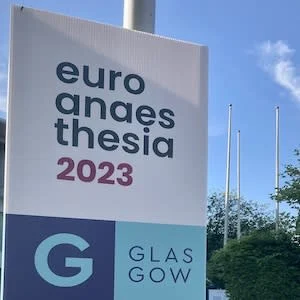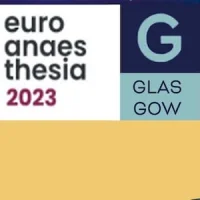New evidence on predictive haemodyanmic monitoring software was presented this week at the Euroanaesthesia Congress in Glasgow.
The EU-HyProtect Registry was created to investigate the occurrence, duration, and seriousness of intraoperative hypotension in patients monitored using Acumen Hypotension Prediction Index software (Acumen HPI software) during elective major non-cardiac surgery. This software was developed using machine learning. It uses arterial pressure waveform features to predict hypotension. The software assesses the likelihood of a patient experiencing hypotension (MAP of <65 mmHg for one minute or more) on a scale of 0 to 100, triggering alarms if the value exceeds 85. Additionally, a pop-up window displays relevant haemodynamic variables to aid clinicians in identifying the cause of hypotension and providing prompt treatment.
Karim Kouz, the primary author of the EU-HyProtect study, highlights the difference between predictive monitoring using the software and traditional reactive monitoring. In the past, healthcare professionals would measure blood pressure and intervene with treatment once hypotension was detected, but by that time, the patient may have already experienced harm. The advantage of predictive software is that it allows for proactive treatment of impending hypotension before the patient becomes hypotensive, thus preventing potential harm.
The study included 702 patients from 12 medical centres across five European countries. Study patients underwent elective major non-cardiac surgeries under general anaesthesia, with a predicted duration of at least 120 minutes. The study's primary endpoint was the time-weighted average MAP below the threshold of 65 mmHg, as this measure considers both the duration and severity of hypotension while correcting for the overall monitoring time.
The main finding of the study was that the median time-weighted MAP below 65 mmHg was extremely low, measuring just 0.03 mmHg with a range of 0.00-0.20 mmHg. Further analysis showed that patients spent a median of only two minutes or 1% of the surgical time below the 65 mmHg MAP threshold. Approximately 41% of patients did not experience any episodes lasting at least one minute with MAP below 65 mmHg, and the median number of such episodes for those who did was 1. The median maximum decrease in MAP below 65 mmHg, lasting for at least one minute, was 7 mmHg.
Dr Karim Kouz highlights the significance of these findings, stating that the utilisation of predictive haemodynamic monitoring resulted in remarkably low levels of hypotension in terms of duration and severity and could be instrumental in reducing the duration and severity of hypotension in patients undergoing major non-cardiac surgeries.
Source: Euroanaesthesia 2023; Journal of Clinical Medicine
Image Credit: Euroanaesthesia 2023








